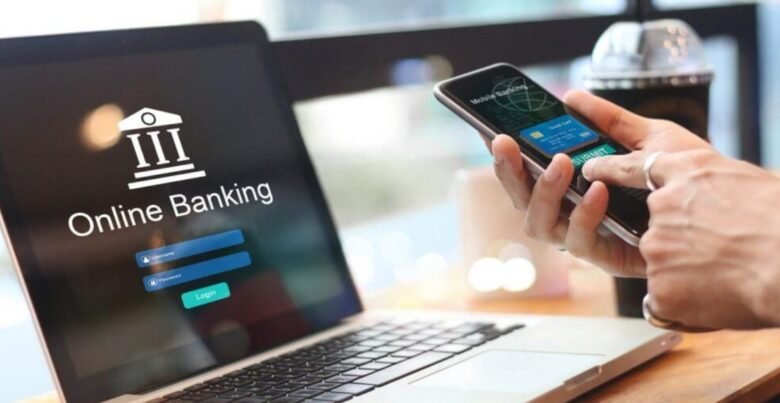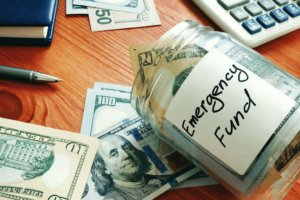Online banking has dramatically changed the way we manage our money. It offers simple, fast, and effortless access. Now, with just a few clicks, we can transfer money, pay bills, check our balance, and even invest. Previously, performing these tasks in a bank branch took a long time. But with the growth of digital banking, the risks also increase. Cybercriminals are constantly finding new ways to exploit online vulnerabilities, and even a small mistake can expose your savings to fraud or identity theft.
This means everyone who banks online needs to be safe. Protecting your financial information is a must; it’s no longer an option. In this article, we explore some research-based, practical, and simple ways to keep your money safe online. Learn how to bank safely online and minimize the risks.
Make Sure Your Password is Strong and Unique:
Your password is the first step to secure online banking. People often use easy-to-guess passwords or use the same password for multiple accounts. Hackers target this. A good banking password should be long, complex, and unique compared to your other passwords. It should contain uppercase and lowercase letters, numbers, and special characters. For added security, avoid using personal information such as your date of birth, name, or phone number. Password managers are ideal for creating and storing secure passwords without having to remember them all. Research indicates that strong, unique passwords significantly reduce the likelihood of account hacking. If you take this first step seriously, it will be much harder for attackers to access your bank account without permission.
Enable Two-Factor Authentication (2FA):
Two-factor authentication is now one of the best ways to protect your online data. Two-factor authentication (2FA) adds an extra layer of security by requiring another form of verification, such as an SMS code, an email link, or app approval. This type of security makes it much harder for someone to steal your password. Most banks now offer this feature, and enabling it can significantly reduce your vulnerability to fraud. Two-factor authentication (2FA) requires more than just something you know, like your password.
It also requires something you have, like your phone or security token, or something you can use to identify yourself, like your fingerprint or facial recognition. Adding an extra layer to a lock makes it even harder for someone who shouldn’t be able to gain access. For the best protection, always use app-based authentication instead of SMS codes. SMS messages can sometimes be intercepted. This simple action can significantly improve the security of your online banking.
Be Careful When Using Public Wi-Fi:
Free Wi-Fi in cafes, airports, and hotels may seem convenient, but it can also be a haven for hackers who can steal your private information. Public networks are often unsecured, making it easier for hackers to obtain your login credentials or financial information through methods like “man-in-the-middle” attacks. Stay safe by not accessing your bank accounts while connected to public Wi-Fi. If necessary, use a reliable virtual private network (VPN). VPNs encrypt your connection and protect your data from prying eyes. It’s also wise to use a mobile data connection, as it’s generally more secure than public networks. Risking your savings for a few minutes of convenience simply isn’t worth it. When you’re on the go, be careful with online banking to prevent cyber theft.
Check Your Accounts Regularly:
Carefulness is one of the most important, yet least mentioned, aspects of online banking. By regularly checking your bank accounts, you can detect suspicious activity early on, such as unauthorized withdrawals, unusual purchases, or unusual login attempts. Furthermore, enable real-time transaction notifications via email or text message, as most banks now offer this service. These notifications act as personal security guards for your account, alerting you to any changes.
Furthermore, make it a habit to carefully review your monthly statements. If you see any charges you don’t recognize, contact your bank immediately. Hackers often test your account with small transactions before attempting larger amounts. Even if someone hacks your account, you can immediately mitigate the damage by staying proactive.
Update Your Software and Devices:
Keeping your devices and software up to date is another important strategy for protecting your savings. Hackers often exploit vulnerabilities in outdated operating systems, browsers, or banking apps to gain unauthorized access. Software updates are designed to patch security holes and make your computer run more smoothly. If you don’t install these updates, your devices could be at risk.
To stay ahead of hackers, always enable automatic updates for your phone, computer, and banking apps. Installing high-quality antivirus and anti-malware software is another way to protect yourself from threats. Updating is like maintaining your digital security system. Even the strongest lock can break if it’s not updated. Securing your digital space is the first step toward protecting your savings, and timely upgrades are a crucial part of that.
Conclusion:
Online banking is here to stay because it makes managing your money easier and faster than any other method. But you must protect your online presence, because it’s incredibly simple. You can significantly reduce the risk of cyber threats by using strong and unique passwords, enabling two-factor authentication, avoiding public Wi-Fi for banking, checking your accounts regularly, and keeping your devices up to date. Taking one step to protect your savings isn’t enough; you need to create multiple layers of security that work together. To ensure the security of your online banking, you need to be consistent, informed, and proactive, just as you would lock your front door. By following these tips, you can enjoy the convenience of online banking while protecting your hard-earned money from prying eyes.
FAQs:
1. How often should I change my online banking password?
You should change your online banking password every three to six months, or immediately if you think it’s incorrect.
2. Is online banking on a computer more secure than mobile banking?
Both are secure when you use an up-to-date device and a secure network. However, mobile banking apps often add extra security measures, such as biometric login, making them even more secure.
3. Are banking apps from stores other than my bank safe?
Not safe. To prevent malware, we recommend always downloading your bank’s official app from trusted sources, such as the Apple App Store or Google Play Store.
4. What should I do if I think someone has hacked my bank account?
Contact your bank as soon as possible. If possible, freeze your account, change your login details, and closely monitor transactions you haven’t made.
5. Do I need a VPN for online banking at home?
A VPN provides additional encryption that isn’t necessary on a private home network. It’s useful when you need to access your accounts on a shared or public network.




